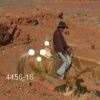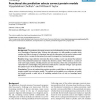524 search results - page 26 / 105 » Disease Modeling Using Evolved Discriminate Function |
BMCBI
2010
13 years 10 months ago
2010
Background: Protein kinases play crucial roles in cell growth, differentiation, and apoptosis. Abnormal function of protein kinases can lead to many serious diseases, such as canc...
CVPR
2010
IEEE
2010
IEEE
Learning a Hierarchy of Discriminative Space-Time Neighborhood Features for Human Action Recognition
14 years 6 months ago
Recent work shows how to use local spatio-temporal features to learn models of realistic human actions from video. However, existing methods typically rely on a predefined spatial...
BMCBI
2008
13 years 10 months ago
2008
Background: The prediction of protein structure can be facilitated by the use of constraints based on a knowledge of functional sites. Without this information it is still possibl...
MKWI
2008
13 years 11 months ago
2008
: The possibility of a direct link between business workflows and the supporting application system is often seen as the critical strength of the SOA paradigm. Though in practice, ...
ICML
2006
IEEE
14 years 10 months ago
2006
IEEE
We present a simple statistical model of molecular function evolution to predict protein function. The model description encodes general knowledge of how molecular function evolve...


